Abandoned A-B
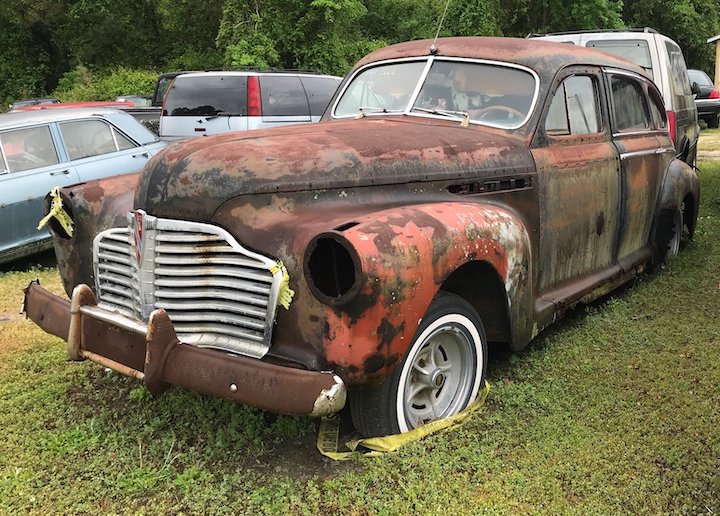
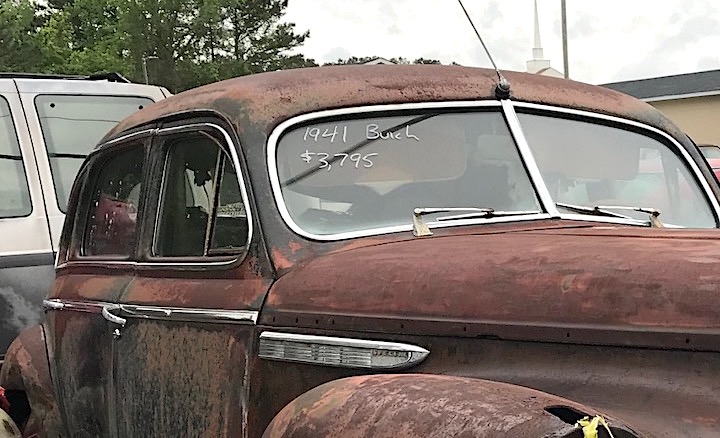
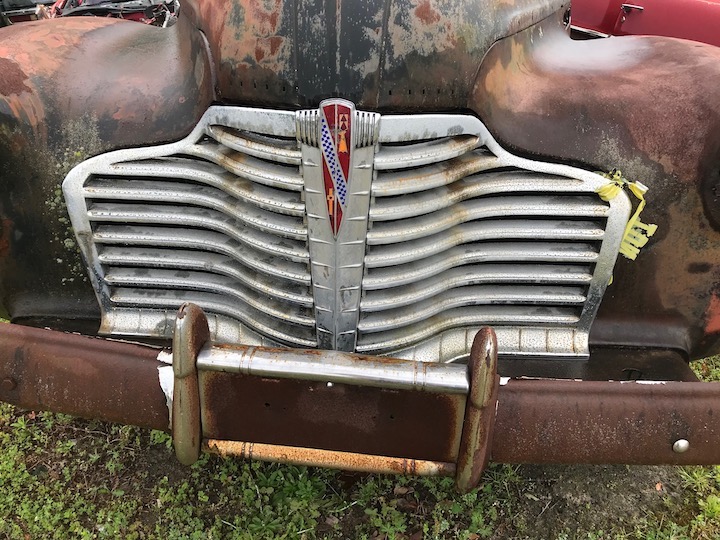
BUICK (1941) — The last full-year of Buick production before the U.S. entered World War II was 1941. In that year, Buick was the fourth best-selling brand behind Chevrolet, Ford and Plymouth with sales of 374,196. The owner of this 1941 model found in Kinston, N.C., apparently thinks it has some life remaining with a For Sale price of $3,795. Prices for a new Buick in 1941 ranged from about $1,300 to $1,800. (Photos by Jim Meachen)


BUICK (1955) — This 1955 Buick, which has seen much better days, was discovered in northern Florida. Buick was the nation's third largest car brand in 1955, outsold only by Chevrolet and Ford with sales of 738,814. It was Buick's best year in history up to that point. There were two V-8 engines available across the lineup, one with 236 horsepower and 330 pound-feet of torque and the base engine with 188 horsepower. (Photo by Jim Meachen)
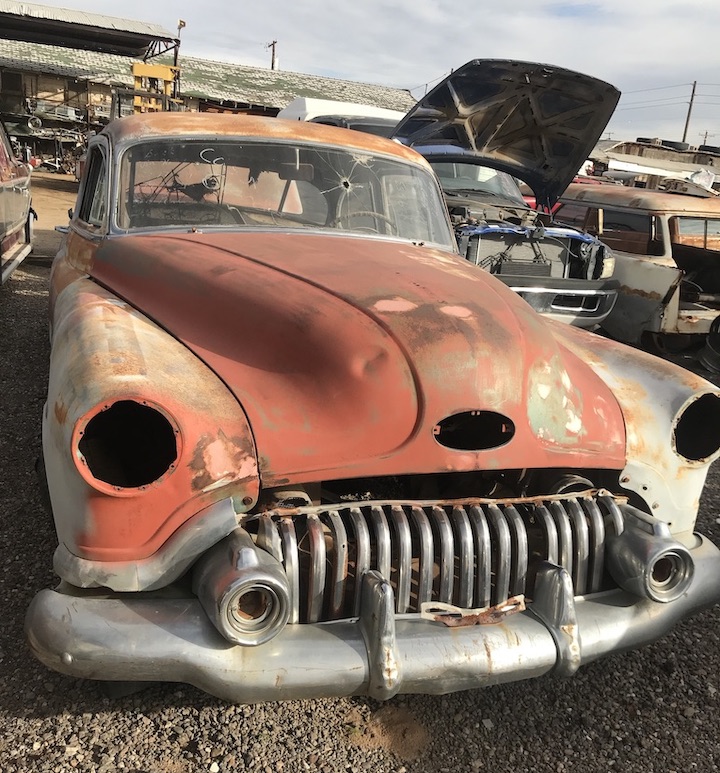
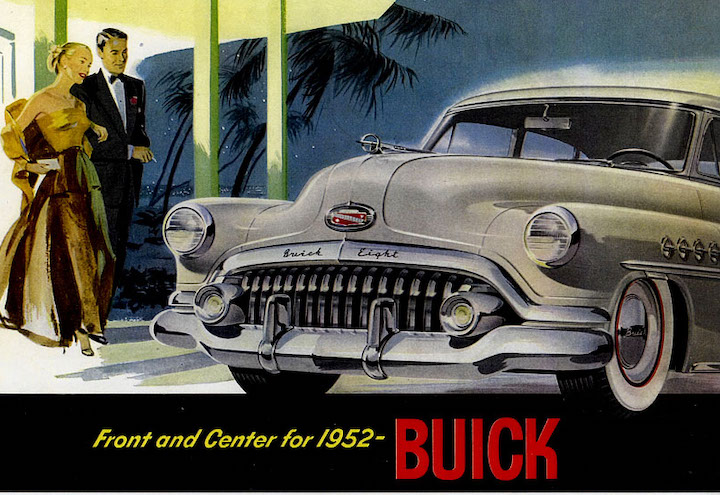
BUICK (952) We hope nobody was sitting in the driver's seat when a bullet apparently went through the windshield of this used-up 1952 Buick discovered in an Arizona salvage yard. Buick was the fourth highest-selling nameplate in 1952 trailing only Chevrolet, Ford and Plymouth. (Photo by Jim Prueter)
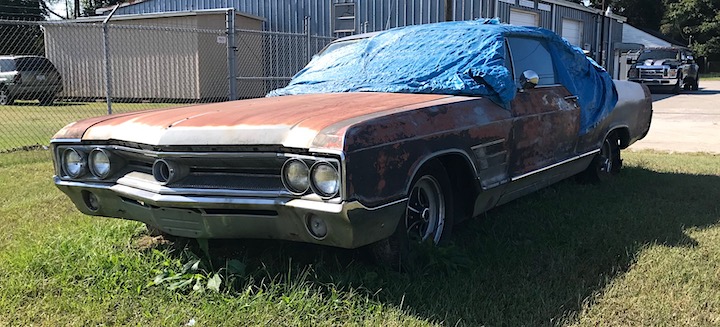
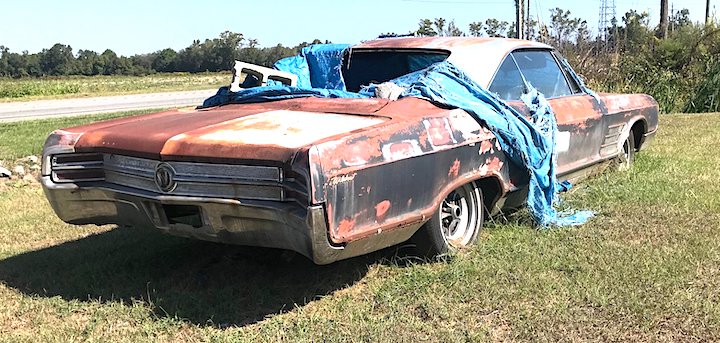
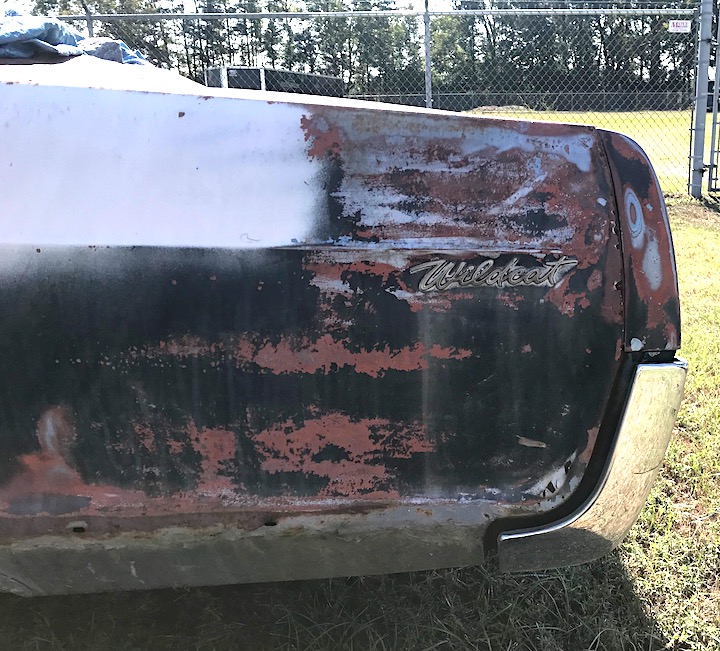
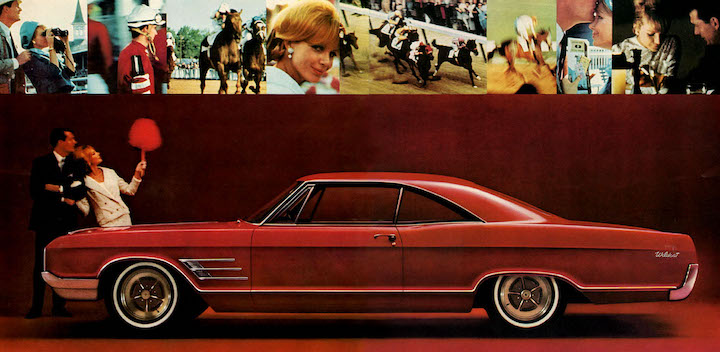
BUICK (1965) — The Wildcat was a separate body style built by Buick from 1963 through 1970. This two-door 1965 Wildcat found in eastern North Carolina is the first year of the second generation (1965-70). The second-generation Wildcat came in two-door hardtop and convertible, and four-door hardtop and sedan. There were three engine options — 425 cubic inch, 430 cubic inch and 455 cubic inch V-8s. A 3-speed automatic and a 3-speed manual transmission were offered. (Photos by Jim Meachen)
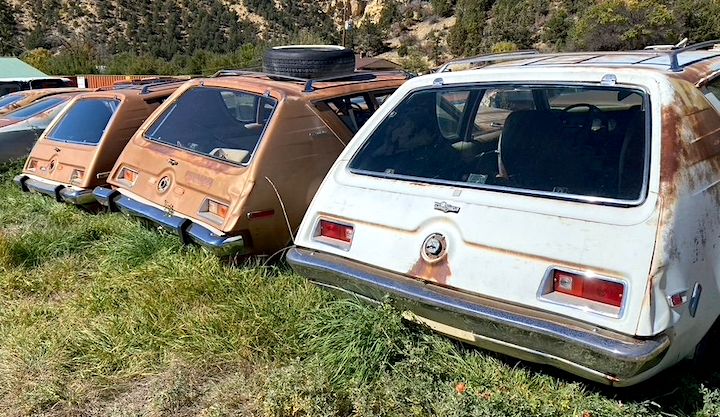
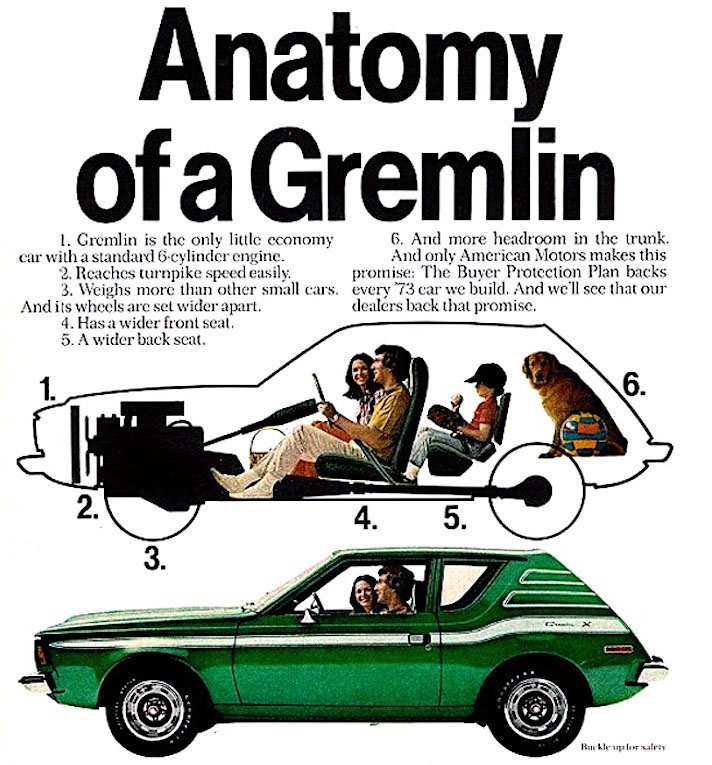
AMC GREMLIN (1970-1978) — Three mid-1970s AMC Gremlins are living together in retirement in a Utah salvage yard. The Gremlin is a subcompact introduced in 1970, manufactured and marketed in a single, two-door body style (1970–1978) by American Motors Corporation (AMC). Using a shortened Hornet platform, the Gremlin was classified as an economy car and competed with the Chevrolet Vega and Ford Pinto. The Gremlin reached a total production of 671,475 over a single generation. (Photo by Jim Prueter)
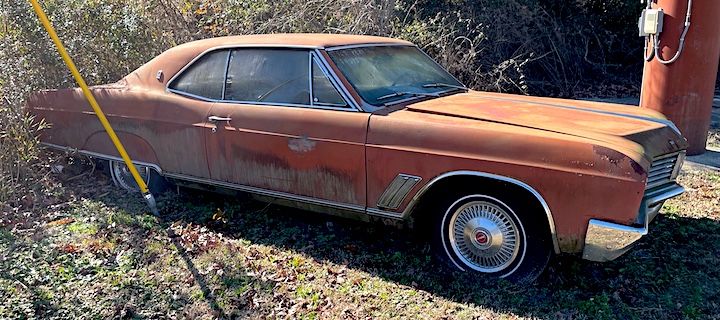
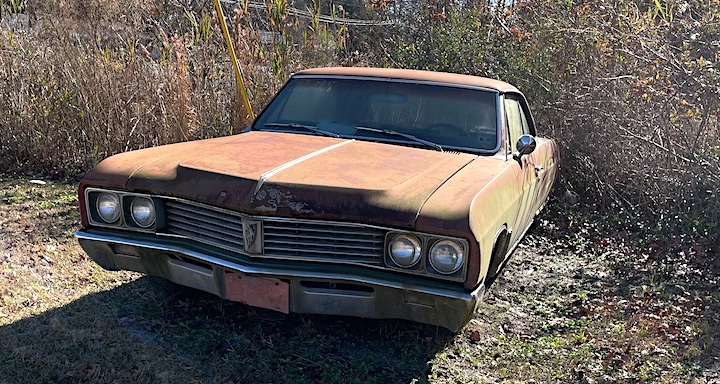
BUICK (circa 1967) — This circa 1967 Buick Gran Sport resides in an abandoned state in eastern North Carolina. Buick sold a number of coupes in various guises in the mid-to-late '60s. That helped to make Buick the country's fifth best seller from 1964 though 1968. (Photos by Jim Meachen)
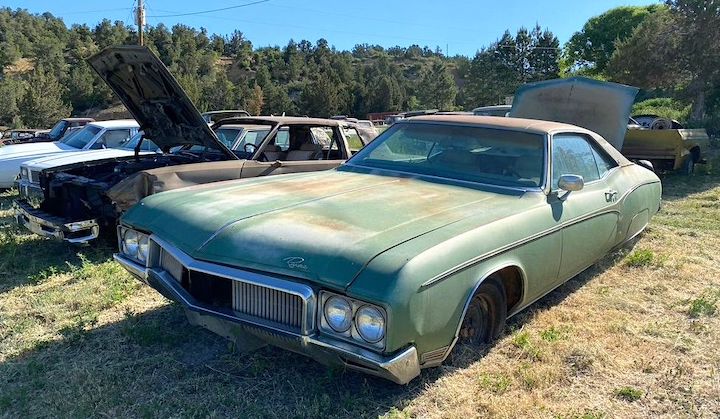
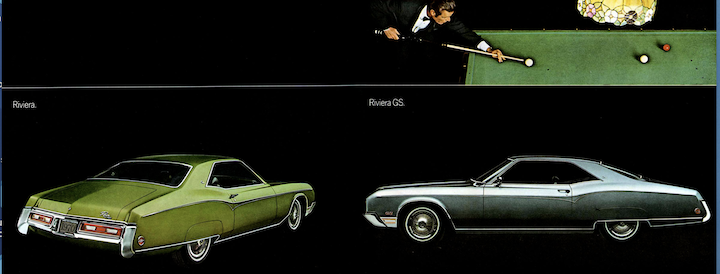
BUICK (circa 1970) — The Buick Riviera was marketed by General Motors as a "personal luxury car" from 1963 through 1999. This second-generation Riviera — circa 1970 — was found in Utah in what looks like restorable condition. The second-gen Riviera could be purchased with three sizes of V-8 engines mated to a 3-speed automatic transmission. (Photo by Jim Prueter)
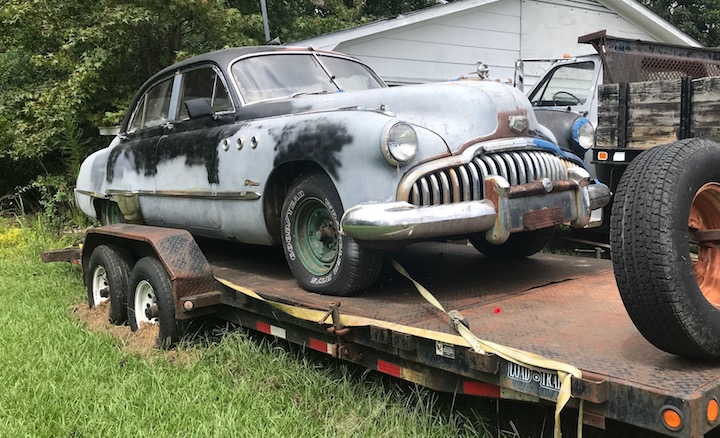
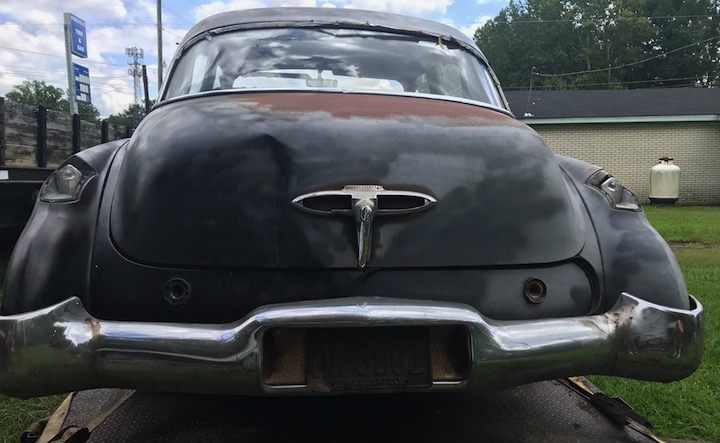
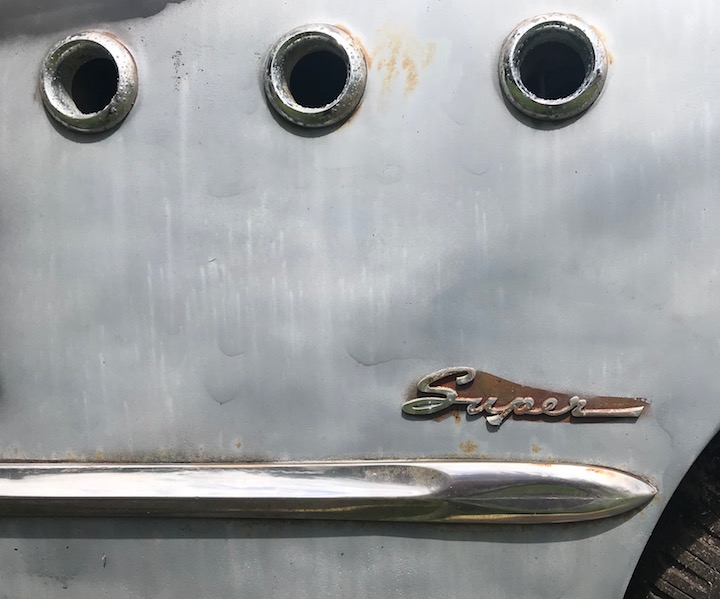
BUICK (1949) — This 1949 Buick Super in Pikeville, N.C., was found ready for transport — perhaps to an automobile restorer. The Super was a full-sized Buick on Buick's larger body shared with the Roadmaster. The Super was produced from 1940 through 1958 and could be differentiated by its three VentiPorts. Three engines were available — two inline 8 cylinders rated at 248 and 263 cubic inches and a V-8 with 322 cubic inches. All were mated to a 3-speed sliding shift manual Dynaflow automatic. (Photos by Jim Meachen)
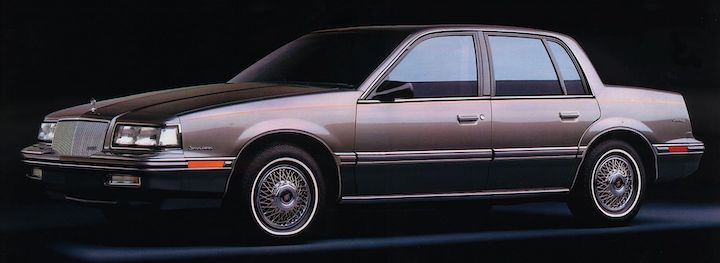
BUICK (circa 1989) — The fifth-generation compact Buick Skylark — built from 1985 through 1991 — came in two-door and four-door configurations. This circa 1989 model found resting in a North Carolina yard (note the wheels have sunk a few inches into the ground) came with a new-for-1989 3.3-liter V6 making 160 horsepower. (Photos by Jim Meachen)
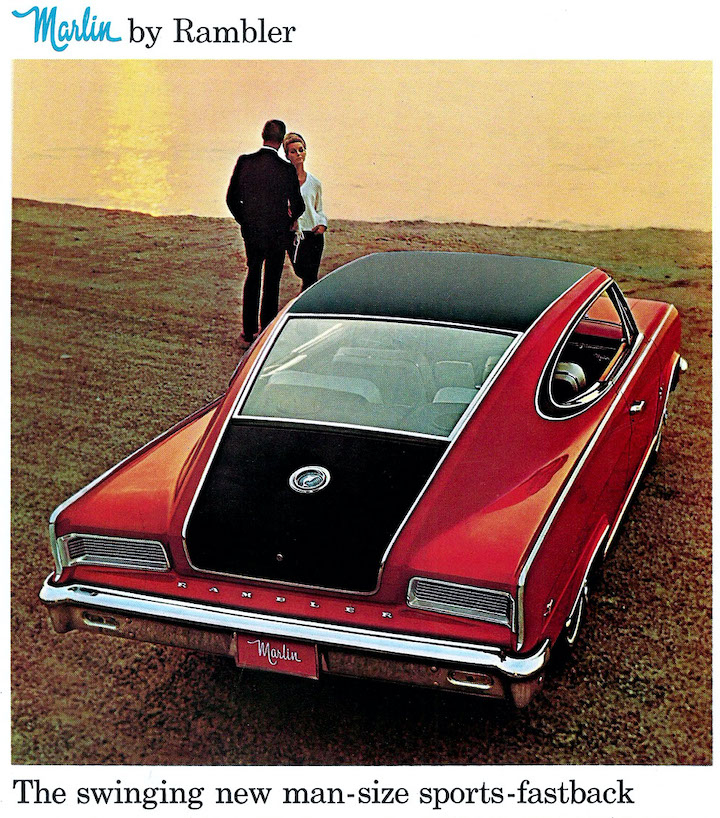
AMC (1965) — The two-door Rambler Marlin was built by the American Motors Corp. (AMC) from 1965 to 1967. Marlins were fastback versions of the mid-sized two-door hardtop Rambler Classic. AMC aimed it at buyers wanting a sporty fastback that was roomy and comfortable, contrasting it with the smaller Barracuda and Mustang fastbacks that had arrived a year earlier. The Marlin, following the muscle car launches of the 1960s, was intended to outflank competitors as a product they did not offer. The car could be ordered with a 327 cubic inch V-8 with a 0-to-60 time of about 10 seconds. This stripped-down example was found in eastern North Carolina. (Photos by Jim Meachen)
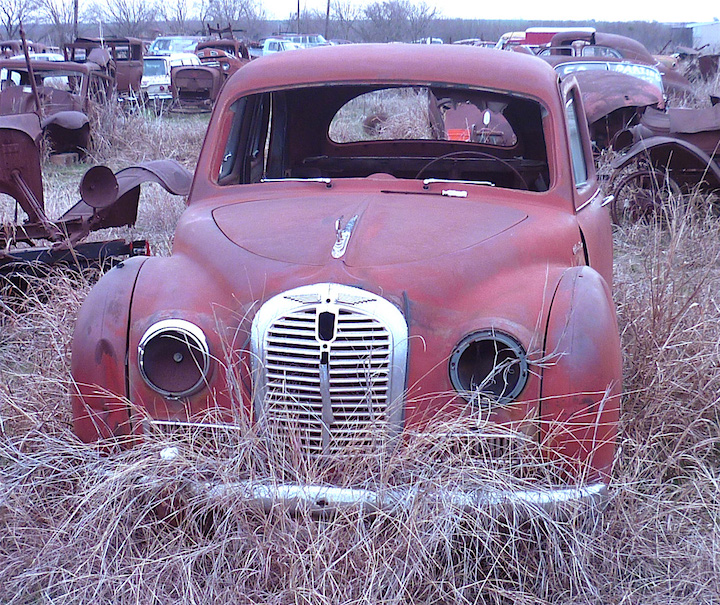
AUSTIN (1950) — Austin is a British car company that dates back to the early years of the 20th Century. The name is perhaps best known in North America for manufacturing the Austin-Healey roadster. But its main emphasis was on family cars. An example is this circa 1950 Austin A70 discovered in a Texas salvage yard. It was built from 1948-1950. A sub-compact by today's standards with a wheelbase of 96 inches and a length of 163 inches. (Photo by Peter Hubbard)
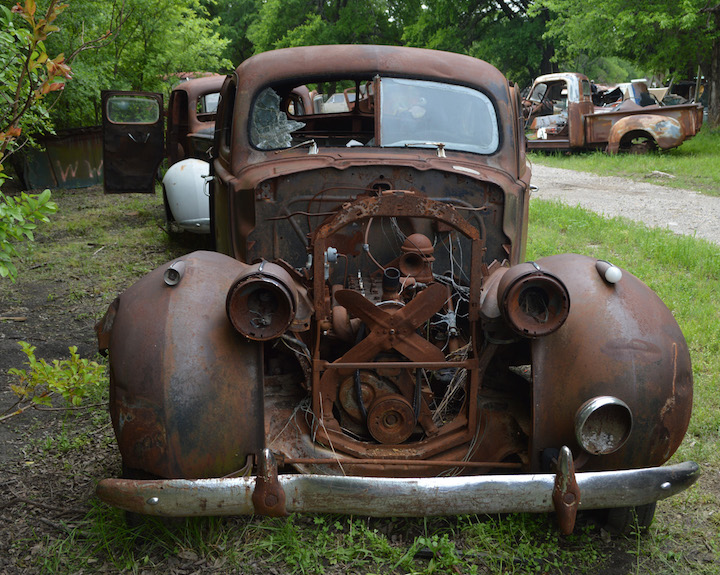
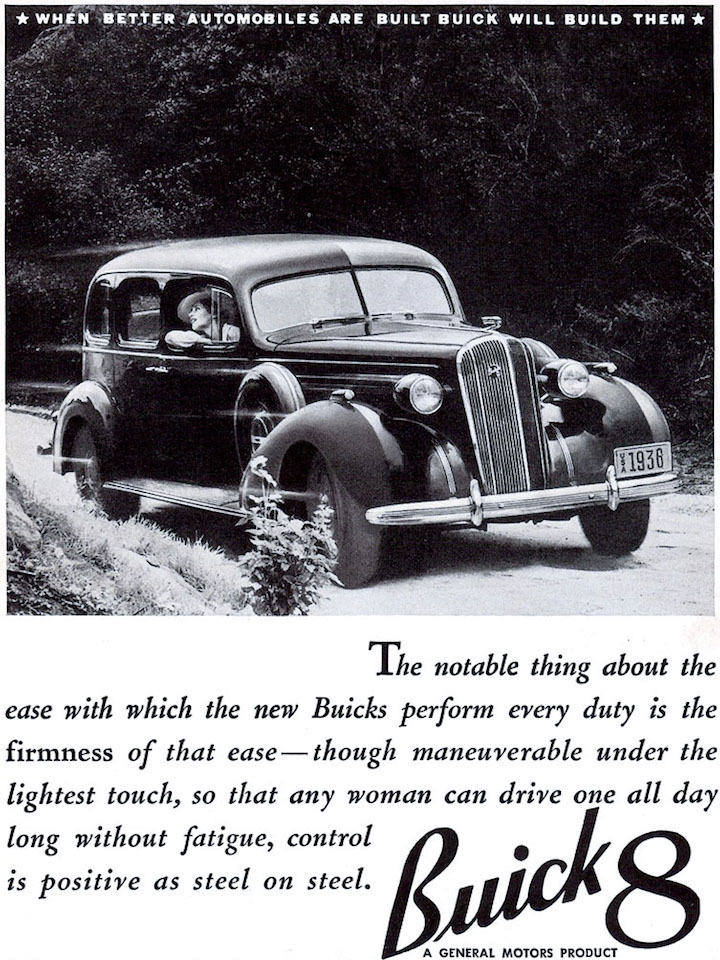
BUICK (1936) — This stripped out and rusting 1936 Buick was found in a Texas field of abandoned cars. Because of the styling work of famed General Motors' designer Harley Earl, the 1936 Buick enjoyed a sales resurgance compared to 1935. Buick sold 53,249 units in 1935 increasing to 168,596 in 1936 and 220,346 in 1937. (Photo by Peter Hubbard)
BUICK (1961-63) — General Motors introduced three new compact cars in 1961 — the Buick Special, Pontiac Tempest and Oldsmobile F-85. In the middle of the 1961 model year, the Buick Skylark — a luxury trim of the Special — debuted. There were two engines available — a 3.2-liter V-6 or a 155-horsepower 3.5-liter V-8. The first generation was built through the 1963 model year. This example was found deteriorating along Route 66 in Seligman, Ariz. (Photos by Ted Biederman)
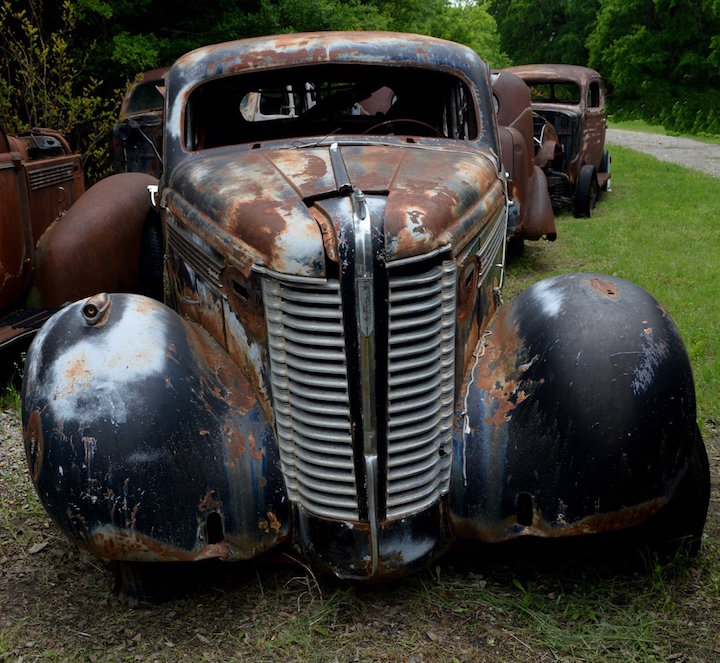
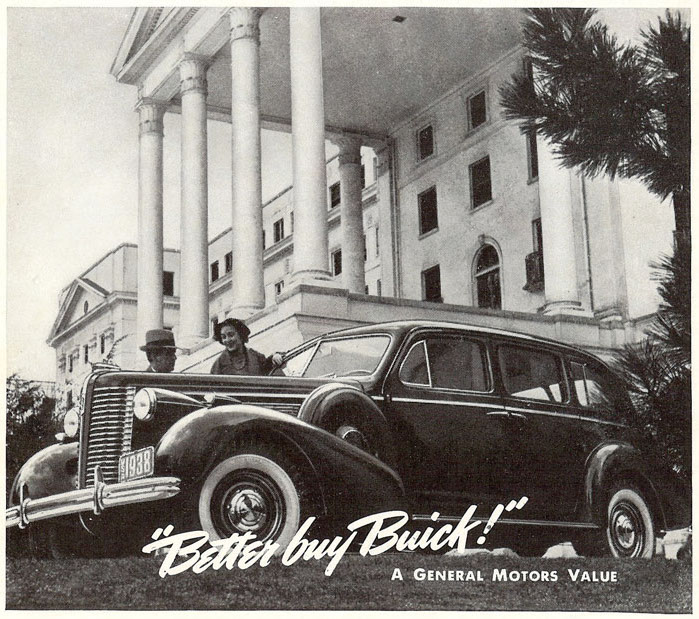
BUICK (1938) — A restored 1938 Buick can fetch a lot of cash these days. Unfortunately, this example spotted in a Texas field of used up cars of the past century is not one of them. Most 1938 Buicks came equipped with a straight eight engine of various sizes with horsepower ratings ranging from 120 to 168. Buick was the fourth best-selling car in 1938 behind the "Big Three" Chevrolet, Ford and Plymouth with 168,689 units sold. (Photo by Peter Hubbard)
BUICK (circa 1940) — There's not much left of the front end of this 1940 era car that we think it's a Buick. Buick was the fourth best-selling car in the country in 1940 with 278,748 units sold. This cannibalized car was found in an Arizona salvage yard. (Photo by Becky Antioco)
BMW (late 1980) — This late-80s second-generation BMW 3 Series convertible was found in an abandoned condition in eastern North Carolina. Convertibles were introduced to the second-generation 3 Series lineup in 1985. The first 3 Series was sold in the U.S. in 1977. (Photos by Jim Meachen)
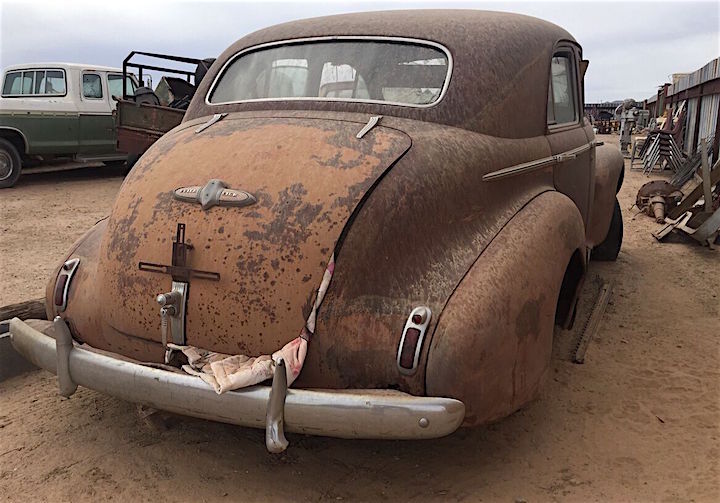
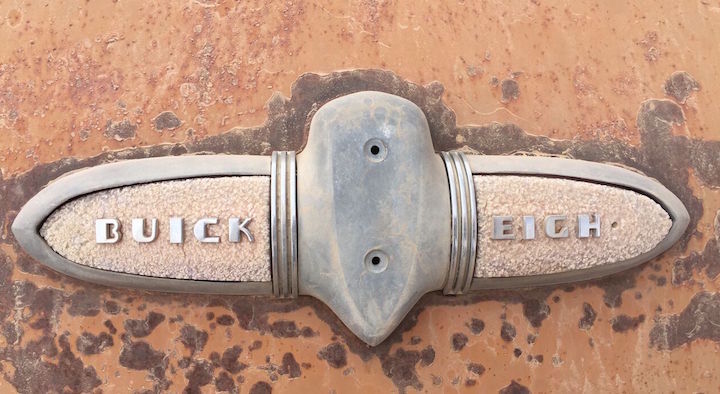
BUICK (1940) — This 1940 Buick was found in a junk yard in Maricopa, Ariz. Buick was the fourth best-selling nameplate in the country in the years leading up to World War II. Buick trailed only Chevrolet, Ford and Plymouth in sales with 278,784 in 1940 and 374,196 in 1941. 1941 was Buick's largest sales year in history. (Photos by Jim Prueter)
BMW (second generation) — The BMW 3 Series is a compact car built by the German manufacturer since 1975. This second-generation (1982-1994) 325 was found in an abandoned condition in eastern North Carolina. The second generation expanded the line from just a two-door, to a four-door, convertible and station wagon. (Photos by Jim Meachen)
BUICK (1984) — The fourth generation of the Buick Skylark was a compact sedan and coupe based on General Motors' X-body architecture shared with the Chevrolet Citation, Pontiac Phoenix and Oldsmobile Omega. The Skylark came with three engine options — a 2.5 four-cylinder, and two versions of a 2.8-liter V-6. They were mated to a three-speed automatic and a four-speed manual. This 1984 Skyark was found in eastern North Carolina. (Photos by Jim Meachen)
BUICK (1949) — The redesigned 1949 Buick was the first to use "VentiPorts" that became a trademark of the Buick brand. The top line Roadmaster received four ports while the remaining Buick lineup got three. The ports actually corresponded to the displacement of the straight-eight engine installed. This rustic Buick is on display at the Cow Canyon Trading Post in Bluff, Utah. (Photos by Jim Prueter)
AUDI (circa 1982-84) — The Audi 4000 was sold in the U.S. from 1980 through 1987 before it was replaced with the 80/90 series. It could be purchased through the years with either a 5-cylinder engine or a four-cylinder that grew from an initial 1.6-liter, then to a 1.7-liter and finally to a 1.8 liter. The 4000 was of compact size with a length of 176.6 inches and a wheelbase of 99.4 inches, about the same size as the current Audi A3. This 1982-84 model was spotted living by itself in a salvage field in N.C. (Photos by Jim Meachen)
BUICK (1963) — The 1963 Buick Skylark and Special was a "compact" car (193 inches long) sharing the same chassis, engines and basic sheet metal with the Pontiac Tempest and Oldsmobile F-85. Engine choices included a 3.2-liter V-6 and a 3.5-liter V-8. Transmission choices were a three on the tree manual, a four-speed floor-shifted manual and a two-speed "Dual Path Turbine Drive" automatic. This copy was found in a barn in eastern North Carolina. (Photos by Jim Meachen)
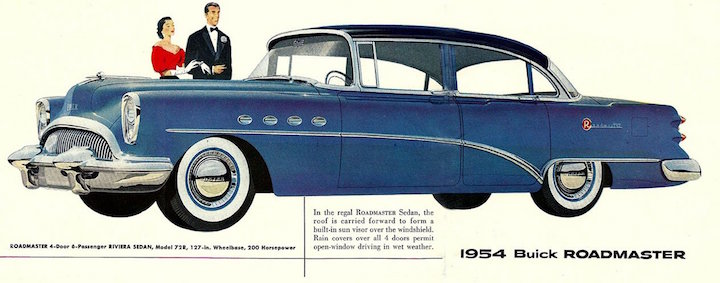
BUICK (1954) — This 1954 Buick Roadmaster (notice the four-porthole design) has not only suffered the indignity of losing its grille and engine, but whoever was last into the car ingloriously left the hood gapping open. The Roadmaster was longer than other models and got a 200-horsepower V-8 engine. Above, a advertisement for the 1954 Roadmaster. (Photos by Ralph Gable)
BUICK (1956) — This neglected 1956 Buick appears to be in restorable condition. Buick sold 153,627 copies in '56 with two V8 engine options making 225 horsepower and 255 hp. Prices ranged from $2,416 to $3,704. (Photos by Jim Meachen)
BUICK (1964) — The Buick Skylark shared its underpinnings with the Oldsmobile F-85, Pontiac Tempest and Chevrolet Chevelle starting in 1964. The standard engine was a 225-cubic inch V-6. It was made in five body styles including a convertible. This rusted-out '64 Skylark is long past the point of no return. (Photo by Ralph Gable)
BUICK (1991) — The Buick Century name was first used by General Motors in 1936. A new Century came into the picture in 1973, and in 1982 the Century was built on a mid-sized platform. It got a facelift for 1989 and minor design changes in the following years. The last Century was built in 2005. This abandoned Buick residing next to an equally abandoned house in southeastern North Carolina appears to be a 1991 model. (Photos by Jim Meachen)
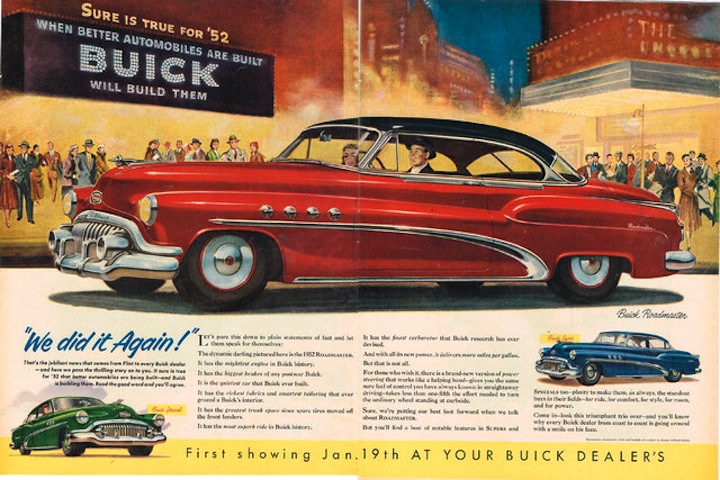
This1952 Buick two-door coupe, discovered in Wisconsin, sports a two-tone yellow and rust look. Buick was one of the most popular nameplates in 1952 with total U.S. production of 303,745 with the four-door Deluxe Sedan leading with 63,346 sold. (Photo by Jerry Brown)
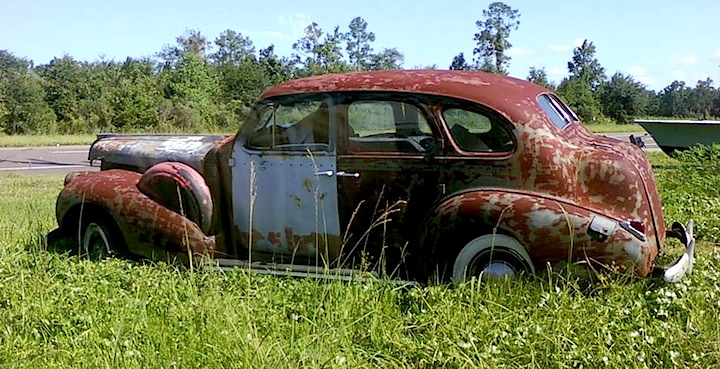
BUICK (late 1930s) — Buick reworked and renamed its entire lineup for the 1936 model year to celebrate the engineering improvements and design advancements over the 1935 models. This is an example of a post-1935 Buick, late '30s model, which was found parked along the side of a highway in central Florida. Below, an advertisement for the 1938 Buick. (Photo by Jeffrey Ross)
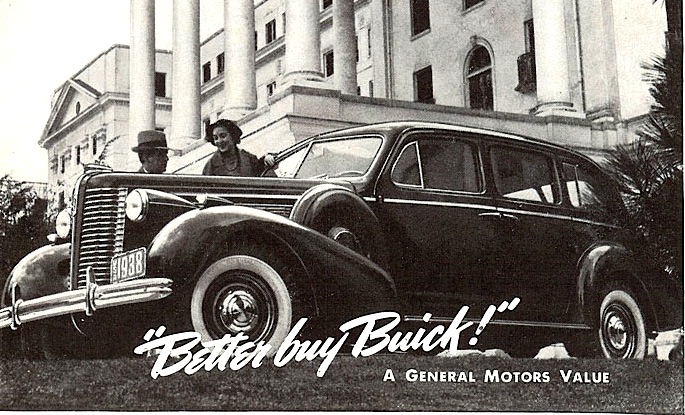
BUICK (1970) — For the first time in several years, Buick offered an Estate Wagon on the B-body LeSabre platform in 1970. The only engine available was a Buick 7.5-liter V-8 making 360 horsepower mated to a three-speed automatic transmission. It was a heavy car by today's standards weighing in at about 5,000 pounds. This 1970 example seems to be in drivable and restorable condition. (Photos by Ralph Gable)
BUICK (1955) It appears that someone "abandoned" this restoration of what looks like a 1955 Buick in stripped down guise . Note it has four VentiPorts, which denotes either the larger V-8 engine or higher trim level. (Photos by Ralph Gable)
AMC PACER (circa 1975) — Practical perhaps, but weird looking in our estimation, the AMC Pacer hit the market in 1975. It was designed, according to AMC, to offer the interior room and feel of a big car in a small-car package with its extraordinarily wide stance and enormous glass area. Despite good reviews from the automotive press, the Pacer never really caught on with the public and was discontinued in 1980. This abandoned early-model Pacer appears in restorable condition. (Photos by Jim Meachen)
BUICK (1954) — The grille from this1954 Buick Roadmaster has probably been transplanted in another Buick. But this car seems still relatively intact despite the organ donation. The 1954 was an all-new model, significantly bigger than the model it replaced, growing nine inches in length and more than five inches in wheelbase. The standard Roadmaster engine was a 5.3-liter Nailhead V-8 mated to a two-speed Dynaflow automatic transmission. The1954 Roadmaster engine came in two horsepower variants,164 and 188. (Photos by Ralph Gable)
BUICK (1967) — This 1967 Buick LeSabre enjoys nice surroundings in its abandoned retirement. The LeSabre entered its third generation in 1965 and continued through 1970 with incremental styling updates. The '67 LeSabre received a slightly updated grille treatment. The first three generations of LeSabres were full-sized six-passenger body-on-frame cars. Engine options included four V-8s ranging in size from a 300-cubic-inch 4.9-liter to a 455-cubic-inch 7.5-liter. The standard transmission was a three-speed automatic. (Photos by Ralph Gable)
AMC (1968) — A 1968 AMC Ambassador SST trim line hardtop coupe rests comfortably in a field of eastern North Carolina weeds. It was one of the first mainstream cars in North America to get air conditioning as standard equipment. (Photo by Jim Meachen)
AUTOCAR — This huge Autocar Integral Sleeper Cab appears to be an early 1950s model. Indentification supplied by a reader. (Photo by Ralph Gable)
BUICK (1953) — This Buick Special — notice the three fender portholes — was spotted in a southeastern North Carolina field. The Special was Buick's lowest priced model, below the mid-level Super and the top-of-the-line Roadmaster in 1953. General Motors renamed the Special the LeSabre for the 1959 model year. The 1953 Special was powered by the Fireball straight eight. The Special got the more powerful Nailhead V-8 in 1954. (Photo by Ralph Gable)
BUICK (1960) — This 1960 Buick has been put out to pasture in eastern North Carolina. (Photo by Jim Meachen)
